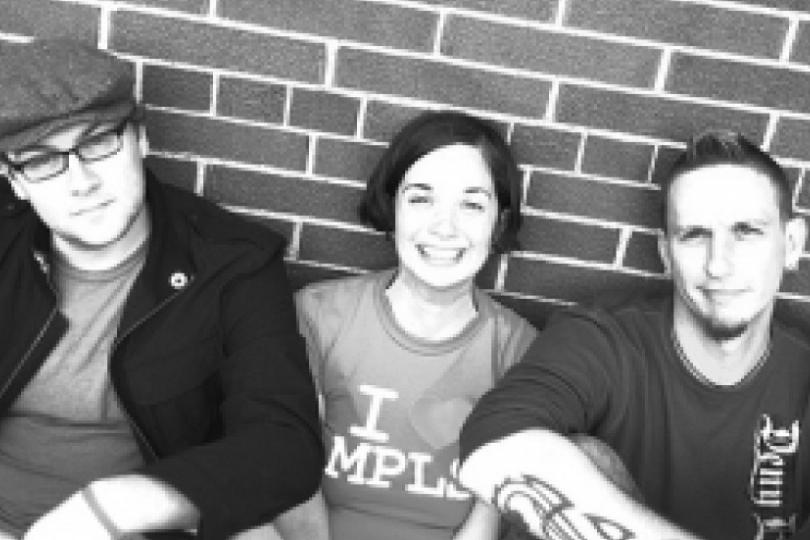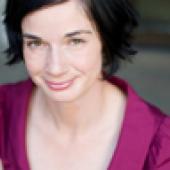HUGE Theater opened December 5, 2010, but like most openings, it was a long time coming. In 2002, Butch Roy and Five Man Job founded Improv A Go Go, so that groups would have a place to perform on a regular basis. This show is still running on Sunday nights, and any group can perform by submitting their name to the lottery. It was the first show to open at HUGE Theater, which seemed fitting.
In 2005, five like-minded experienced improvisers – Butch Roy, Nels Lennes, myself, Mike Fotis and Joe Bozic – founded HUGE Theater and began producing improv shows. Without a theater space, we produced shows at spaces like the Old Arizona, the Brave New Workshop, Bryant Lake Bowl, ComedySportz, the Varsity and Grace Trinity Church. Butch, I and Nels continue to serve as the board of HUGE, while Mike and Joe are busy as mainstage performers and educational directors at the Brave New Workshop. In 2007, Butch and Five Man Job founded the Twin Cities Improv Festival, a chance to showcase the best of local talent and national performers.
Why a new improv theater?
The problem has always been that improvisation is rarely prime-time. With the exceptions of Stevie Ray's and ComedySportz, improvisation in Minneapolis has been relegated to off-nights and late nights; improv sets tacked on to the end of the Brave New Workshop's sketch shows, or student performances. It's catch-as-catch can. There were so many talented improvisers, but no place for them to play on a regular basis. That was the real impetus to open a theater. We know wonderful groups -- Fingergun, Mustache Rangers, Splendid Things, to name a few -- that we want people get to see every week. Also, we wanted the shows we produce, like “Ka-Baam” and “Overheard in Minneapolis,” to have an 8:00 slot on a weekend, like a mainstage show should.
Stevie Ray's and ComedySportz perform excellent game improv, but there has been no home for scenic improvisation. The distinction is game improv (also called “short form”) plays games with set rules – for example, a scene where each line of dialogue starts with the next letter of the alphabet. In scenic improvisation (also called “long form”) characters interact in longer scenes that have no proscribed rules. They might operate within a form – three scenes that intertwine or a Tennessee Williams spoof – but moment to moment, the characters just interact as in a scripted play. We wanted to put this kind of work center stage.
Butch writes, “When the Improv A Go Go took off it seemed like it was the beginning of this whole story and when the Twin Cities Improv Festival began it seemed like it had to be right around the corner but there was always the question of how the hell we get from ‘here’ to ‘there’’even with all the energy and support around us. There always seemed to be a frightening gap between where we were and where we wanted to be.”
We waited a long time before we realized that we had to take a leap of faith. There's a quote about improvisation attributed to one of its pioneers, Del Close. “Jump first, figure out how to land on the way down.” There was never going to be a perfect time, we had to just do it.
“That was probably the day the work actually started,” Butch wrote, “...when we changed gears from doing shows and talking about how we were going to do this ‘someday’ and how awesome it was going to be to actually doing it. It's easy to keep an eye on the tiny steps and tell yourself that you're doing something -- to keep doing shows making enough to get pizza and a drink afterward and talk about how as soon as we have several thousand dollars in the bank we'll be ready … orever. It's easy to mistake that for ’trying’ without actually taking the risk and taking a run at the gap.”
Butch is extrapolating from his experience running Improv A Go Go and Twin Cities Improv Festival, and as the technical director of the Brave New Workshop and as a technician for IML, a meeting services company, to run the theater. Nels, who's directed most of our shows, is serving as our Artistic Director and has assembled a roster of high-quality improv shows for audiences to come see almost any night of the week. I'm directing the education portion, an outgrowth of teaching and administering workshops since 1997. I'm excited about the opportunity to supplement the great improv classes around town, and help improvisers grow from students to professionals.
Getting started
In 2008 we incorporated as a non-profit. We started fundraising and looking at spaces, lining up contractors and volunteers who would help us. We met a lot with Springboard for the Arts, who were a tremendous resource. How did we do it? Butch explains, “Lots of it was luck. Blind, stupid luck. And a really amazing amount of everyone helping out where they were able and giving us assistance in some really important ways, big and small because they wanted to see this project get off the ground as much as we did.”
At the start of the process we were caught in a Catch-22. We needed numbers on construction and budget projections that we could take to funders, but we needed funding to secure a space before we could get a contractor in to give us an estimate on a space. Through mutual theater friends, Butch had a friend at RJ Marco construction and asked if they would be willing to give us a rough outline of the project and costs that we could use to brace ourselves for the expense and to project accurately.
Enlisting Shelter Architecture was a godsend. Butch writes, “Shelter actually designed my home and we have friends in common as well, so what began as just friendly asking of questions here and there about the building and design process became more formal when we found a space that we were really excited about and they agreed that it would make a fun design project and they were excited to do it for the fun and the challenge.”
A lot of things fall into your lap when you let people know your lap needs things to fall into it. Butch was just leaving a position at IML at the same time they were getting rid of surplus equipment. “I was just in the right place at the right time and met the right people that wanted to help - that made so many things more affordable and allowed us to purchase the bare-bones in terms of gear we knew we would need to run a show from a technical standpoint,” Butch writes. The manager of the Hirshfield's Paint around the corner from the theater turns out to be a big fan of Butch's work. The list of friends and family members going above and beyond to make Huge Theater happen grows daily.
“In the meantime,” he adds, “the Bedlam Theater closed and Four Humors found themselves with their theatrical lighting in need of a theater, we had a building becoming a theater in need of lighting. They were generous enough to work out a deal that allowed us to light our space and them to find a new home for their lights and a place to rehearse after the Bedlam was closed.” We also have a few of the chairs from the Jeune Lune, bought by a friend and passed on to us.
Now that we're open, it's both thrilling and terrifying to figure out how we'll stay afloat, and attract audiences and funding. I found a quote the other day: "We have a strategic plan. It's called doing things" -- Herb Kelleher. That's about right. We're just going to run a theater and see what happens.
Jill Bernard
Jill Bernard has been performing with ComedySportz-Twin Cities since 1993, and is also a founding member of HUGE Theater. Her one-woman improv piece, Drum Machine, has been featured at the Chicago Improv Festival, the Toronto Improv Jamboree, the Miami Improv Festival, Philadelphia Improv Festival, and the ComedySportz National Tournament, among others.





